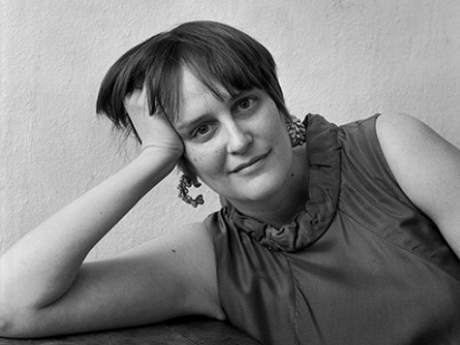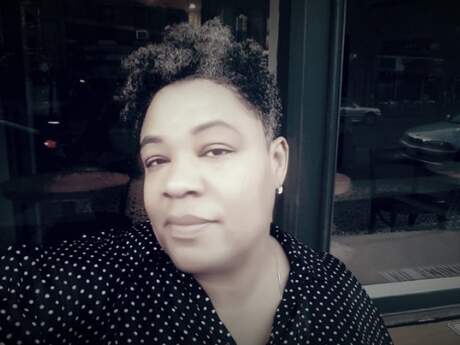New American Poets
New American Poets: Andrea Baker

I don't like my local library. Its small cinder block shape and rare hours make it feel more like an after school program than a cathedral, which is what I think a library should be. Nonetheless, when my son was a toddler it was close to his preschool and I would sometimes escape there for a few minutes of semi-peace under the florescent lights.
On the small shelves of the poetry section, about half of the books are for children and then more than half of the adult collection consists of the Romantics, but occasional books of contemporary poetry creep in and it was there that I fist discovered Mary Jo Bang's Louise in Love. I brought it over to a reading table without expectation but was instantly absorbed into the book's world. It was a landscape of image and fragmented gestures all brought together by a lushly alliterated musicality. I was so delighted that I couldn't bare to read it—a few lines left me tipsy and giggling so on that first day, after just a few minutes of reading, I found a place to hide the book then left. After that, over a couple months time I would return with my own notebook and let my eyes pass over bits of language, stopping to make note of the language it set off in my own head, until I gradually worked my way into reading whole poems, then reading the book as a whole, so that my reading was almost an assembling-- a working up of pieces into a complete whole and it was only after weeks of reading that I came to see the essential narrative framework that the poems rested within. The story told is loosely based on the life Louise Brooks, a silent film star, and her set of close acquaintances. Throughout the book they are traveling, though their travel is focused more on moving through emotional and tonal environments than it is on arriving at a destination.
The reading of this book was heavily influential on my own work. At the time I was writing dense prose-poems with nominal narrative underpinnings, but the notes I made while reading became a spare and lyrically driven serial poem, also arranged around a central female character. In my case, she was Gilda. I began to shape my work from small pieces of language instead of sentences and then, much in the way I had read Louise in Love first as pieces of language then as a whole, slowly grew my own fragments into larger pieces, allowing myself to make decisions on the basis of music instead of rational thought. It is a process that has stuck with me over the past few years and a reading that taught me much of what I know of writing.
* * *
THE STORY OF SMALL CARS
by Mary Jo Bang
Consider, she said, the statue
in the cloister seen on Tuesday: fluted pilasters
and conch shells. Oh, pretty, pretty. A shaved forehead,
tight belt, missing limb.
Oh, crippled. Yes, very crippled. But not very real.
Louise took the train
of her black velvet dress and leaned across the table.
She was telling the story of small cars.
The tale concerned a dog with a tiny blue fez,
a girl named Clara who caught the trail of a smoky cigar
and followed it into catastrophe, a zoo
of undue proportion,
a small green car that ran up a line on a cheek
that had lain on a bedsheet too long.
It ended with the window that opened in, opening out
onto the end of looking. There, she said, the sky is
whatever one wishes. As she spoke,
the intangible drifted out beyond the vast
until it could no longer be seen but was still vaguely perceived—
and nowhere in the sensuous world a cause.
"The Story of Small Cars" by Mary Jo Bang, from Louise in Love. Copyright 2001 by Mary Jo Bang. Reprinted with the permission of the author.


